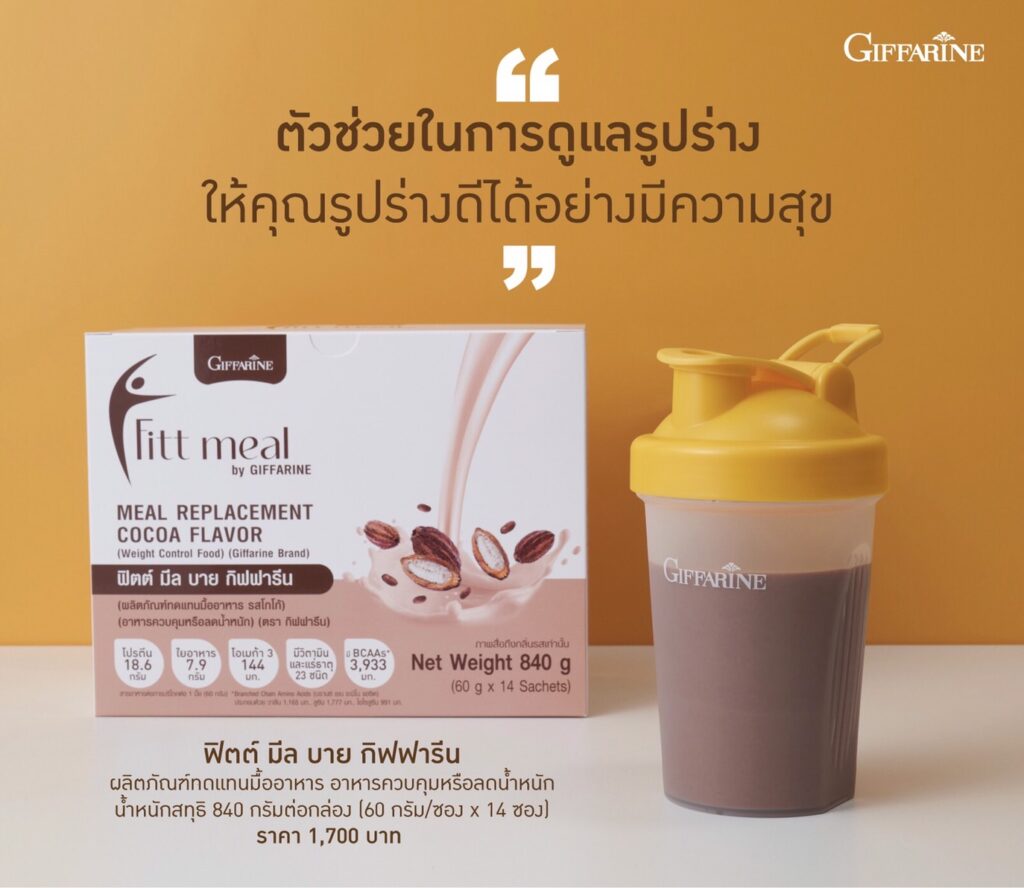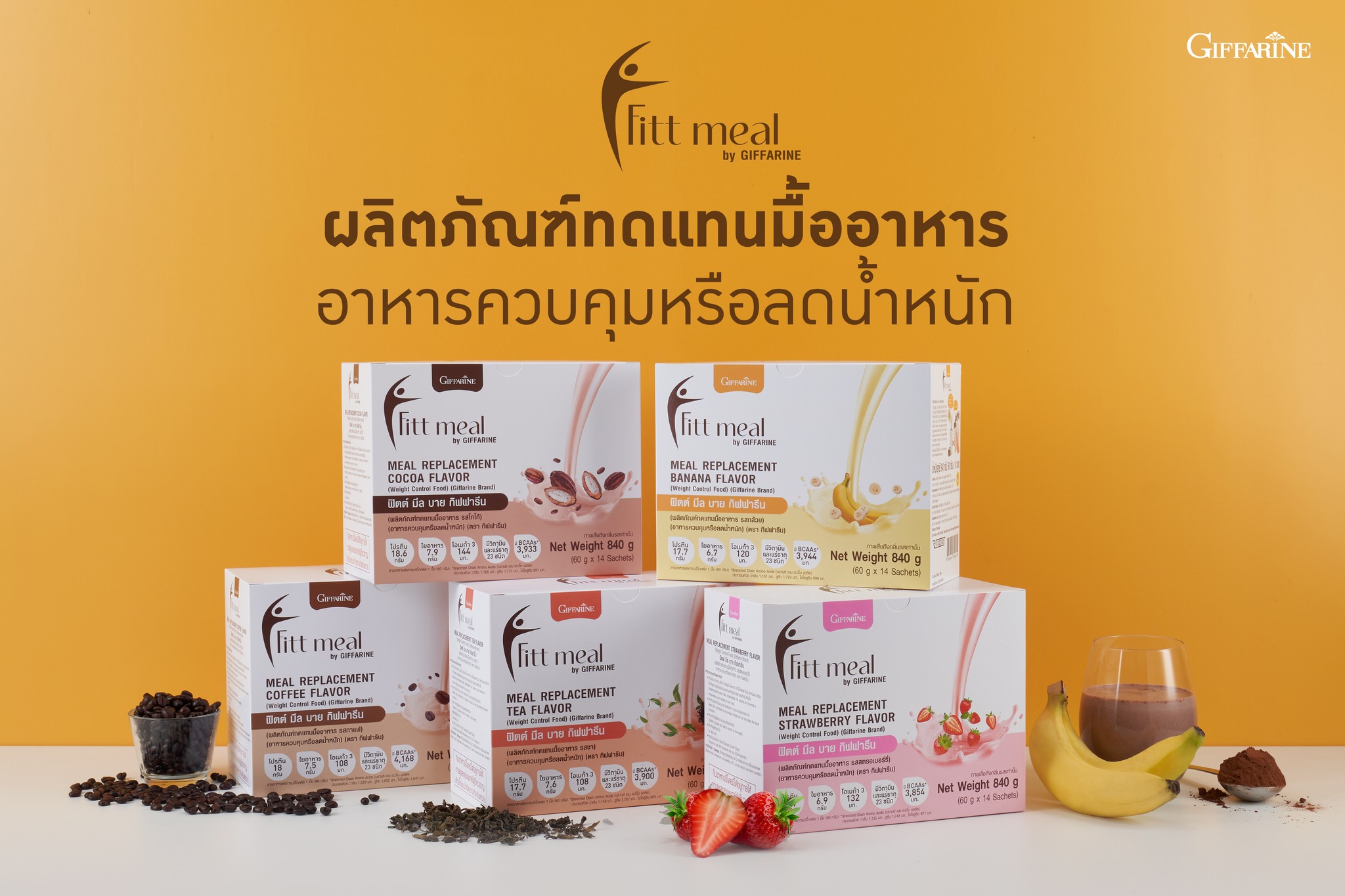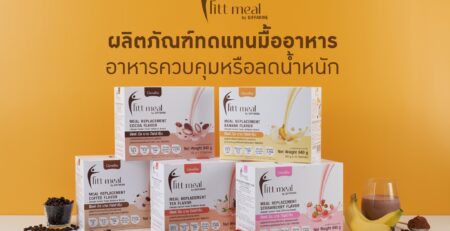Interesting Facts about Meal Replacement Products for Weight Control
To date, the prevolence of overweight and obesity has vastly increased in the world population. This has resulted in various health problems such as type 2 diabetes, hypertension and cardiovascular diseases. An excessively or inappropriately high-energy food intake that is more than the amount that the body can burn will result in obesity. (Ref 1)
Why is weight control necessary?
Weight reduction reduces risk factors associated with obesity. (Ref 1) It also alleviates our body’s inflammatory process and improves the overall health. The most popular method for weight reduction is limiting the amount of daily food intake.
Meal replacement products are effective alternatives for weight control
It is difficult to accurately measure the energy gained from food sources on a daily basis. Therefore, a meal replacement product containing the precise amount of calory intended to replace 1-2 or all daily meals has gained enormous popularity for weight reduction.
Consuming a meal replacement product is more effective for weight reduction than the conventional dietary control. (Ref 2) A systemic review and meta-analysis of 22 studies on weight reduction reveals a superior effect of meal replacement therapy on weight loss when the regimen is given for over 60% of the total daily consumption (approximately 2 meals per day). (Ref 3) In addition, meal replacement products provides sufficient and healthy nutrients with high fiber that is easy to absorb. It also promotes longer sense of fullness when compared to other means of dietary control.
Summary on the benefits of meal replacement products
- Limits food consumption but remains satisfactory for daily energy requirement
- Provides complete nutrients
- Contains essential substances beneficial to our health
- A brilliant tool to alter our unhealthy eating habits

Properties of food formular that meets the Codex standard for its use as a weight control diet. (Ref 4)
- Provides 200-400 kcal per meal (energy of 800-1200 kcal/day is suitable for weight reduction).
- Energy from protein should be 25-50% of the total daily energy. For example, a total energy of 250 kcal must contain at least 62.5 kcal or 15.6 g of protein. However, protein consumption should be no less than 50 g/day and no more than 125 g/day.
- Contains high quality protein fulfilling a sufficient amount of essential amino acid required for the body that is easy to digest and absorb. Examples of food source with high quality proteins are milk, egg and soy protein. Amino acids may also be added to ensure high protein quality.
- Energy from fat not exceeding 30%. For example, a total energy of 250 kcal must contain no more than 75 kcal or 8.8 g of fat.
- Holds more than 3% of total energy from linoleic fat.
- Contains essential vitamins and minerals in a sufficient amount to maintain the good health.
The followings are health benefits of key ingredients from meal replacement products:
- Soy Protein is a high quality plant protein. Consumption of soy protein may reduce blood cholesterols and insulin intolerance, enhance lipid metabolism (Ref 5), and provide phytochemical properties for anti oxidation and disease prevention. (Ref 6, 7)
A meta-analysis of 22 randomized controlled trials involving 870 obese people revealed that consumption of soy product resulted in a significant weight reduction with decrement of body mass index, fat content and waist circumference
- Adding amino acids such as valine, leucine, isoleucine and methionine enhances plants protein quality equivalent to that of animal protein. Valine Leucine and isoleucine are
Branched Chain Amino Acids (BCAAs) that help increase muscle mass, enhance exercise performance, decrease fatigue from exercise and support reduce weight. (Ref 9)
- Poly dextrose
⁃ A soluble dietary fiber with combined prebiotic and symbiotic
⁃ Increase sense of fullness and help with digestion
⁃ Reduces cholesterol and triglycerides
⁃ Regulates normal blood sugar
⁃ Protects from cancer
⁃ Improves the absorption of minerals such as calcium, magnesium and iron from the colon. (Ref 10)
- Fiber cream from coconut oil mixed with inulin reduces blood cholesterol and triglyceride. (Ref 11)
- Hydrolyzed oats is a soluble form of oats naturally derived from the process of hydrolysis. It is molecularly small, easy to digest and processes higher antioxidative property than the conventional oats (Ref 12). Other health benefits from hydrolyzed oats are as follows:
⁃ Reduces blood cholesterol
⁃ Regulates normal blood sugar
⁃ Helps with weight reduction by increase the sense of fullness and reducing appetite
⁃ Increases the amount of good microorganisms in the intestines (Ref 13)
- Coconut sugar has low glycemic index (less than 55) and gradually increases the blood glucose level resulting in a prolong sense of fullness
- Sunflower oil provides an essential fatty acids called linolenic acid
- Thirteen vitamins: vitamin A, vitamin D, vitamin E, vitamin K, vitamin C, vitamin B1, vitamin B2, vitamin B3, vitamin B5, vitamin B6, folic acid, biotin and vitamin B12
- Eleven minerals: sodium, calcium, magnesium, phosphorus, potassium, iron, zinc, iodine, manganese, copper and selenium
Meal replacement products are therefore very useful for those seeking to control diet, lose weight, and sustain a healthy body shape, but still maintain complete nutrients from all five food groups. It is also suitable for those who find it difficult to consume regular meals. Meal replacement products provides with the right amount of energy that is sufficient for our daily needs incorporating essential vitamins, minerals and fibers. Additionally, by gradually increasing the blood glucose level, there is a prolong sense of fullness. It is also very convenient to prepare, consume and reduces the hassle and time for meal preparation.
Click Here to Order Now >> Fitt-meal by Giffarine (Meal Replacement Drinks)

References:
- FAO (2016). Policies and programmes to fight overweight and obesity
- Kim, Young. (2021). Optimal diet strategies for weight loss and weight loss maintenance. Journal of obesity & metabolic syndrome 30(1):20.
- Min, Jihyun, et al. (2021). The effect of meal replacement on weight loss according to calories restriction type and proportion of energy intake: A systematic review and meta-analysis of randomized controlled trails. Journal of the Academy of Nutrition and Dietetics 121(8): 1551-1564.
- Alimentarius, C. (1991). Codex Stan 181, 1991. Codex Standard for Formula Foods for Use in Weight Control Diets
- Velasquez MT, Bhathena SJ. (2007). Role of Dietary Soy Protein in Obesity. Int J Med Sci 4(2): 72-82. doi:10.7150/ijms.4.72.
- Song M, Fung TT, Hu FB, et al. (2016). Association of Animal and Plant Protein Intake With All Cause and Cause-Specific Mortality. JAMA Intern Med. 176(10): 1453-1463. doi:10.1001/jamainternmed.2016.4182
- Naghshi, Sina, et al. (2020). Dietary intake of total animal and plant proteins and rink of all cause, cardiovascular, and cancel mortality: systematic review and dose-response meta-analysis of prospective cohort studies. bmj 370.
- Mu, Yuze, et al. (2019). Soy products ameliorate obesity-related anthropometric indicators in overweight or obese asian and non-menopausal women: A meta-analysis of randomized controlled trails. Nutrients 11(11): 2790.
- Healthline.com (2021). “BCAA Benefits: A Review of Branched-Chain Amino Acids” (online). https://www.healthline.com/nutrition/bcaa สืบค้นเมื่อ 3 มีนาคม 2566
- Do Carmo, Mariane Moreira Ramiro, et al. (2016). Polydextrose: Physiological function, and effects on health. Nutrients 8(9): 553.
- Mumpuni, Hasanah, et al. (2022) FiberCreme as a Functional Food Ingredient Reduced Hyperlipidemia and Risk of Cardiovascular Diseases in Subjects with Hyperlipidemia. Preventive Nutrition and Food Science 27(2): 165.
- Jodayree, Sara. (2015). Antioxidant activity of oat bran hydrolyzed protein s in vitro and vivo. Diss. Carleton University.
- Paudel, D. et al (2021). A review of health-beneficial properties of oats. Foods, 10(11): 2591.






